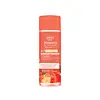What's inside
What's inside
 Key Ingredients
Key Ingredients

 Benefits
Benefits

 Concerns
Concerns

 Ingredients Side-by-side
Ingredients Side-by-side

Water
Skin ConditioningAlcohol
AntimicrobialButylene Glycol
HumectantZinc Oxide
Cosmetic ColorantSuccinic Acid
BufferingDisodium Succinate
MaskingO-Cymen-5-Ol
AntimicrobialMenthol
MaskingDisodium EDTA
Chondrus Crispus Extract
Skin Conditioning3-O-Ethyl Ascorbic Acid
Skin ConditioningPhenoxyethanol
PreservativeAloe Barbadensis Leaf Juice
Skin ConditioningPropylene Glycol
HumectantChlorphenesin
AntimicrobialHectorite
AbsorbentSodium Dehydroacetate
PreservativeAsiaticoside
AntioxidantCitric Acid
BufferingMadecassic Acid
Skin ConditioningAsiatic Acid
Skin ConditioningWater, Alcohol, Butylene Glycol, Zinc Oxide, Succinic Acid, Disodium Succinate, O-Cymen-5-Ol, Menthol, Disodium EDTA, Chondrus Crispus Extract, 3-O-Ethyl Ascorbic Acid, Phenoxyethanol, Aloe Barbadensis Leaf Juice, Propylene Glycol, Chlorphenesin, Hectorite, Sodium Dehydroacetate, Asiaticoside, Citric Acid, Madecassic Acid, Asiatic Acid
Water
Skin ConditioningGlycerin
HumectantPropylene Glycol
HumectantHyaluronic Acid
HumectantMethyl Gluceth-20
HumectantPEG-60 Hydrogenated Castor Oil
EmulsifyingSolanum Lycopersicum Meristem Cell
AntioxidantLactobacillus/Tomato Fruit Ferment Extract
Skin ConditioningPhenoxyethanol
PreservativeNiacinamide
SmoothingXanthan Gum
EmulsifyingBetaine
HumectantParfum
MaskingCitric Acid
BufferingTrehalose
HumectantAllantoin
Skin ConditioningPanthenol
Skin ConditioningDisodium EDTA
Arbutin
AntioxidantTocopheryl Acetate
AntioxidantSorbic Acid
PreservativeHydrolyzed Hyaluronic Acid
HumectantAscorbyl Glucoside
AntioxidantWater, Glycerin, Propylene Glycol, Hyaluronic Acid, Methyl Gluceth-20, PEG-60 Hydrogenated Castor Oil, Solanum Lycopersicum Meristem Cell, Lactobacillus/Tomato Fruit Ferment Extract, Phenoxyethanol, Niacinamide, Xanthan Gum, Betaine, Parfum, Citric Acid, Trehalose, Allantoin, Panthenol, Disodium EDTA, Arbutin, Tocopheryl Acetate, Sorbic Acid, Hydrolyzed Hyaluronic Acid, Ascorbyl Glucoside
 Reviews
Reviews

Ingredients Explained
These ingredients are found in both products.
Ingredients higher up in an ingredient list are typically present in a larger amount.
Citric Acid is an alpha hydroxy acid (AHA) naturally found in citrus fruits like oranges, lemons, and limes.
Like other AHAs, citric acid can exfoliate skin by breaking down the bonds that hold dead skin cells together. This helps reveal smoother and brighter skin underneath.
However, this exfoliating effect only happens at high concentrations (20%) which can be hard to find in cosmetic products.
Due to this, citric acid is usually included in small amounts as a pH adjuster. This helps keep products slightly more acidic and compatible with skin's natural pH.
In skincare formulas, citric acid can:
While it can provide some skin benefits, research shows lactic acid and glycolic acid are generally more effective and less irritating exfoliants.
Most citric acid used in skincare today is made by fermenting sugars (usually from molasses). This synthetic version is identical to the natural citrus form but easier to stabilize and use in formulations.
Read more about some other popular AHA's here:
Learn more about Citric AcidDisodium EDTA plays a role in making products more stable by aiding other preservatives.
It is a chelating agent, meaning it neutralizes metal ions that may be found in a product.
Disodium EDTA is a salt of edetic acid and is found to be safe in cosmetic ingredients.
Learn more about Disodium EDTAPhenoxyethanol is a preservative that has germicide, antimicrobial, and aromatic properties. Studies show that phenoxyethanol can prevent microbial growth. By itself, it has a scent that is similar to that of a rose.
It's often used in formulations along with Caprylyl Glycol to preserve the shelf life of products.
Propylene Glycol is an odorless, colorless liquid. As a humectant, it helps skin retain moisture. It also aids in delivering active ingredients.
Another role of this ingredient is preventing a product from melting or freezing. Propylene glycol also adds antimicrobrial properties to a product, elongating product lifespan.
This ingredient is considered an organic alcohol and commonly added into both cosmetics and foods.
Those with sensitive skin or conditions may develop a rash when using this ingredient.
Learn more about Propylene GlycolWater. It's the most common cosmetic ingredient of all. You'll usually see it at the top of ingredient lists, meaning that it makes up the largest part of the product.
So why is it so popular? Water most often acts as a solvent - this means that it helps dissolve other ingredients into the formulation.
You'll also recognize water as that liquid we all need to stay alive. If you see this, drink a glass of water. Stay hydrated!
Learn more about Water